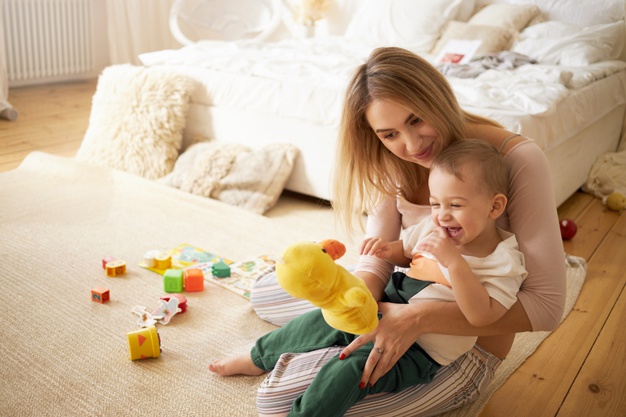We may judge many experiences in our lives by the direct effect they leave or how they have been perceived, but not all have just a superficial effect; some find their way deep inside us, possibly shaping who we become. Childhood memories are among these experiences; those moments spent playing, reading, or watching movies are of great importance.
When you recall a memory of your parent reading a book for you, you may think that this memory is only about spending time together, but you would be wrong. You would better take a look at the findings of a recent study that investigated whether there is a real connection between the brains of infants and adults during time spent together. The results are quite eye-opening; they demonstrate how those moments have a deep impact on us.
The study was conducted at the Princeton Baby Lab with a scope of recording the neural activity in the brains of eighteen kids aged 10–15 months while playing with an adult. In the Lab, researchers created a child-friendly method to record brain activity from both the brains of the child and the adult while playing with toys, singing songs, and reading a book. The neuroimaging system they used is highly safe and records oxygenation in the blood as a proxy for neural activity. Both the child and the adult wore caps that are designed to collect data from 57 channels of the brain known to be involved in prediction, language processing, and understanding other people’s perspectives.
The experiment comprised of two parts; in the first, the adult experimenter spent five minutes interacting directly with a child, while the child sat on their parent’s lap. In the second part, the experimenter turned to the side and told a story to another adult while the child played quietly with their parent.

Not Just Playtime!
The study found measurable similarity in the neural activity in the brains of the kid and the adult; they shared the same wavelength as well. Researchers found that there is a deep connection—feedback loop—that opens up during real-time communication. It influences each other’s prediction in dynamic ways, which helped the adult’s brain predict when the infant would smile, and the infant’s brain to anticipate when the adult would use more baby talk.
The face-to-face sessions showed that the babies’ and the adults’ brains were synchronized in several areas involved in a high-level, understanding of the world that may help the babies decode the overall meaning of the story or realize the motives of the adult reading to them. This synchronization was broken when the adult turned away from the baby.
Moreover, the study found that the strongest coupling occurred in the prefrontal cortex, which is involved in learning, planning, and executive functioning that was previously thought to be quite underdeveloped during infancy.

Successful Communication
This study is not only about how a child’s and an adult’s brains sync during real communication, it is far more than that. It is about how everyday healthy and deep communication can be a source of nourishment for a child that fosters their mental development and helps them create a better realm to grow in.
References
journals.sagepub.com
neurosciencenews.com
sciencealert.com
sciencedaily.com
sciencetimes.com
techexplorist.com
Images designed by Freepik